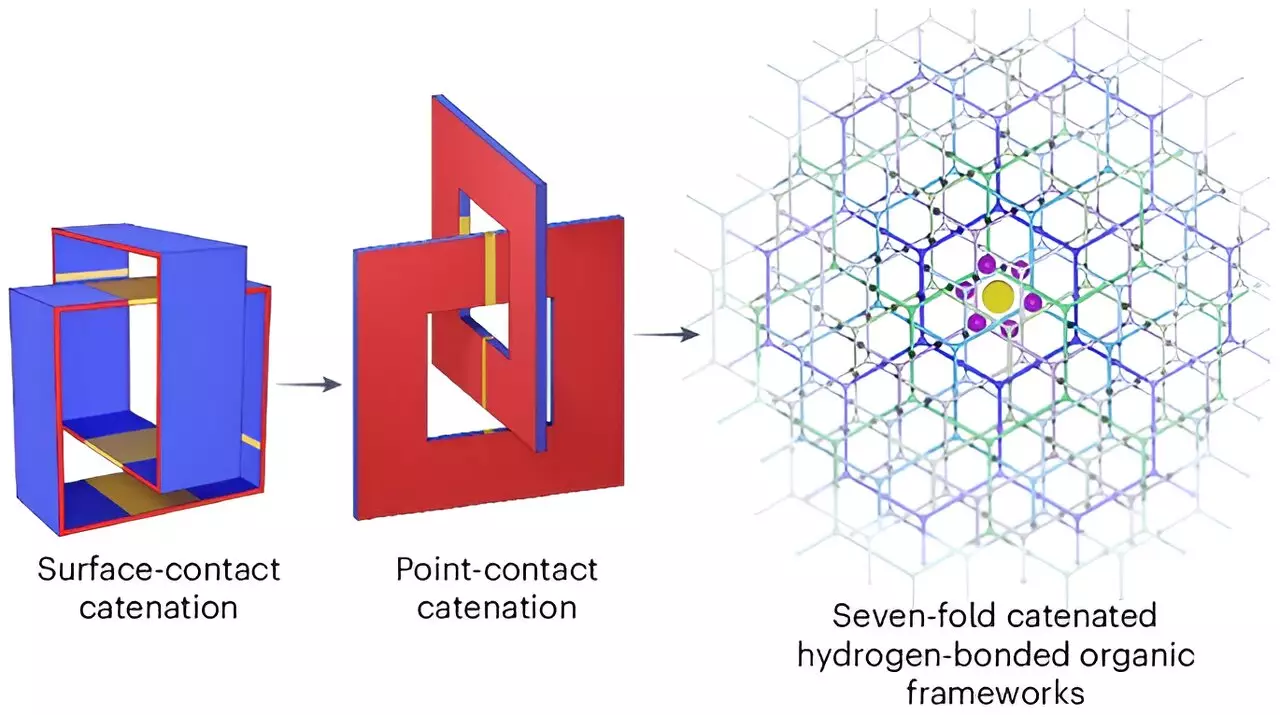For decades, hydrogen has been heralded as a beacon of clean energy potential, boasting the promise of minimal environmental impact compared to fossil fuels. However, the significant challenge lies in its storage. Hydrogen gas occupies more volume than conventional fuels like gasoline, complicating its practical application in energy systems. The quest for efficient, lightweight, and high-capacity storage solutions remains a formidable barrier to widespread hydrogen adoption. Recent advancements led by a multidisciplinary team of chemists from the University of Hong Kong, Northwestern University, and Duke University highlight a promising path forward with the development of novel supramolecular materials suitable for hydrogen compression.
The research team’s study, published in the prestigious journal Nature Chemistry, presents a pivotal advance in the form of porous organic crystals. This innovative material facilitates the storage of hydrogen in a more efficient manner, addressing the critical U.S. Department of Energy storage targets—specifically, achieving a capacity of at least 50 grams of hydrogen per liter while maintaining a weight contribution of hydrogen that is no less than 6.5% of the total composite weight. Previous attempts to achieve these goals have often fallen short, but this new approach claims to break those barriers.
The synthesized material employs a honeycomb-like structure crafted from interconnected organic molecules. This specific arrangement creates precise pores sized to accommodate hydrogen molecules effectively. Remarkably, the new storage system has demonstrated the ability to hold 53.7 grams of hydrogen per liter, translating to a hydrogen weight proportion of approximately 9.3%, thus surpassing the Department of Energy’s criteria.
One of the most significant advantages of these supramolecular materials is their stability. The bonds formed between hydrogen gas and the crystalline structure contribute not only to efficient storage but also to a reduction in the material’s porosity. This is a crucial improvement over previous storage mediums which often struggled with effective gas retention. The interlinked design of the crystals also significantly bolsters the structural integrity of the material, offering a safe means of storing hydrogen under diverse conditions.
However, as with many advances, there are trade-offs. The reliance on cryogenic cooling methods to maintain the necessary conditions for hydrogen storage introduces challenges related to cost and equipment bulk. For any real-world application, the practicality of maintaining such low temperatures on a commercial scale remains an outstanding question.
While the current study represents a significant leap toward solving hydrogen storage issues, the future of these technologies will depend on continuous refinement and innovation. Researchers must focus on mitigating the drawbacks of cryogenic requirements and explore integration possibilities with existing energy systems. The promising developments in supramolecular materials underscore the necessity for interdisciplinary collaboration in addressing the pressing challenges of sustainable energy storage.
As the drive for clean energy solutions intensifies worldwide, this groundbreaking research signals a potential turning point for the hydrogen economy, turning an idealized vision into a feasible reality. The momentum generated by such studies could pave the way for future breakthroughs that make hydrogen a cornerstone of sustainable energy technologies.

